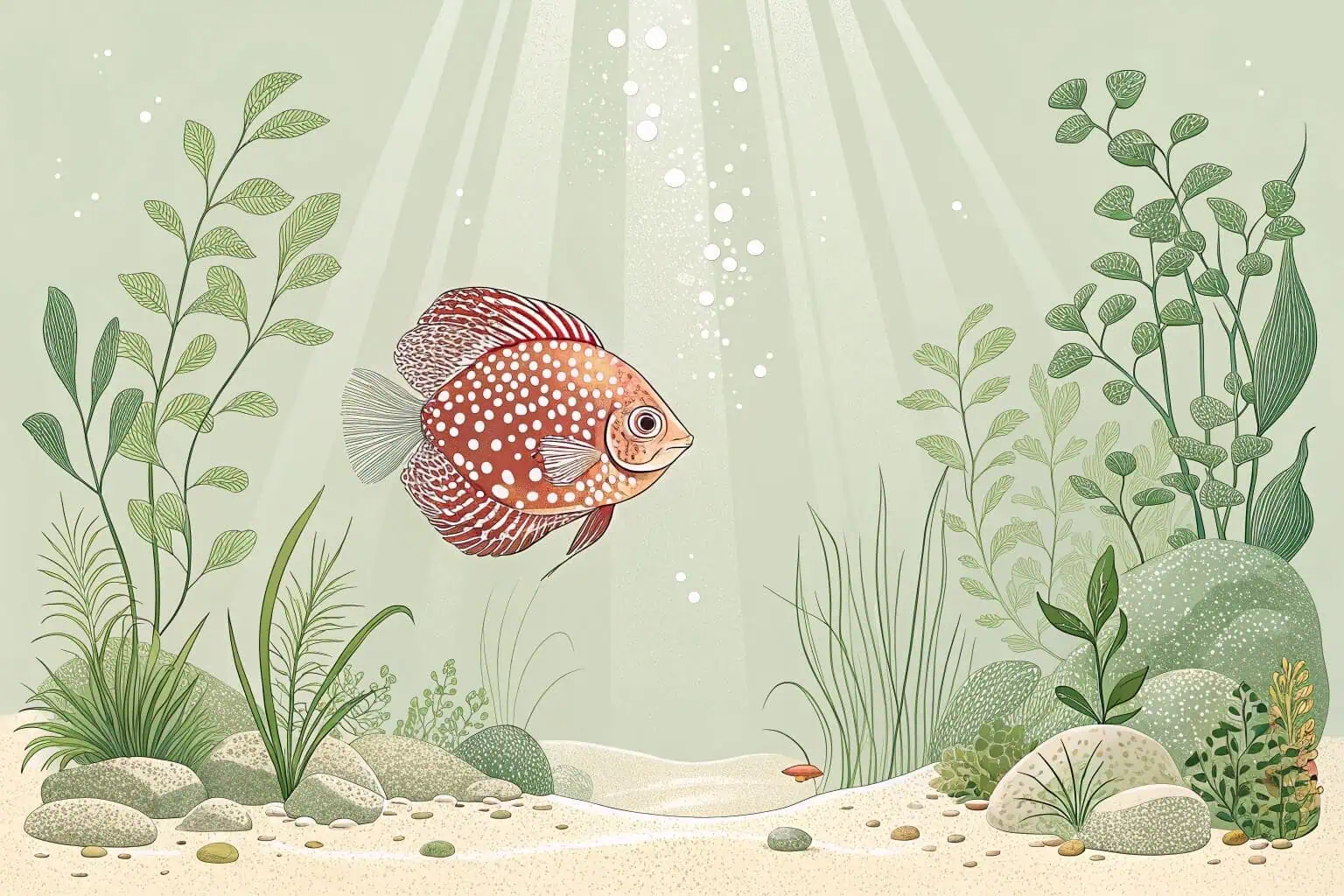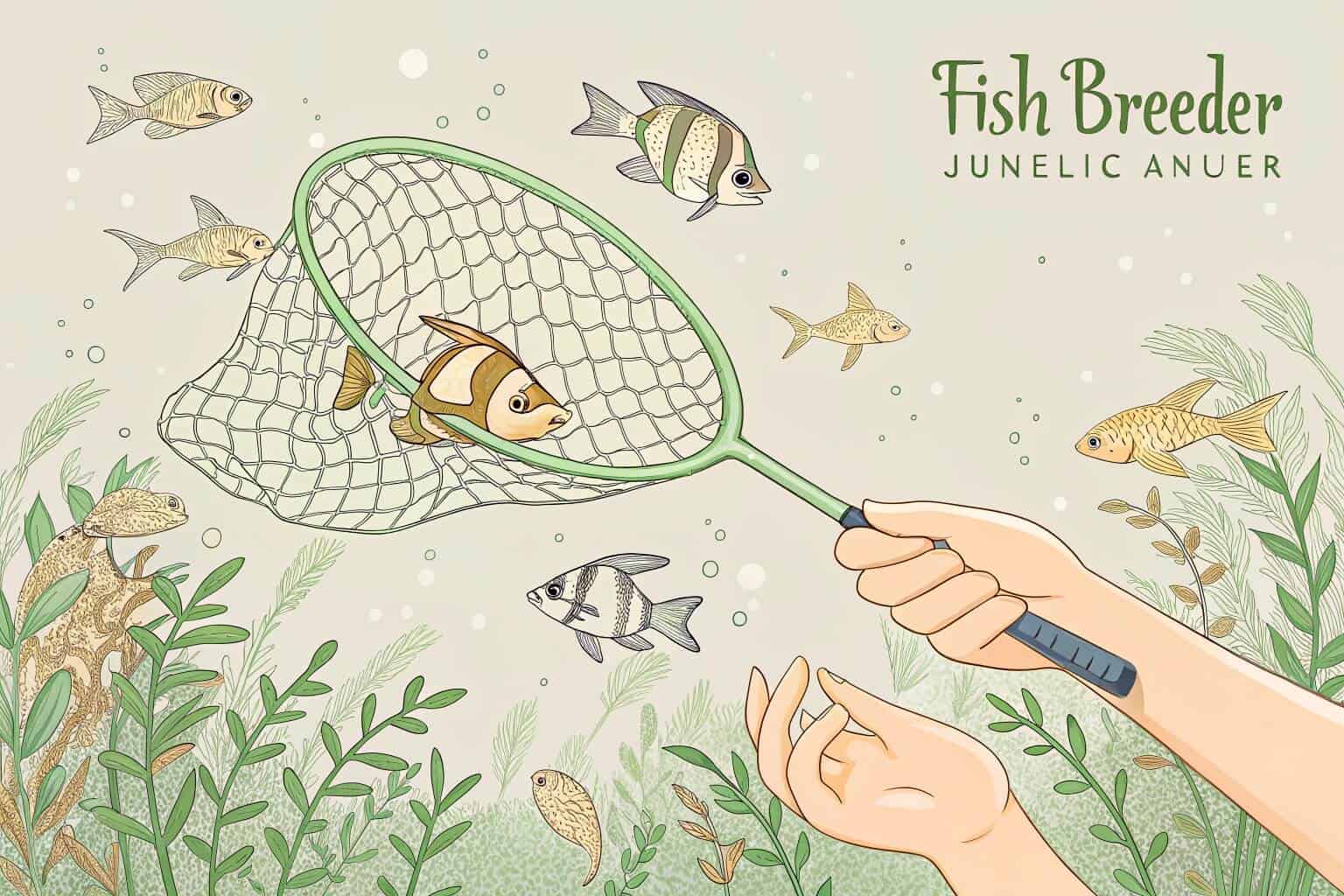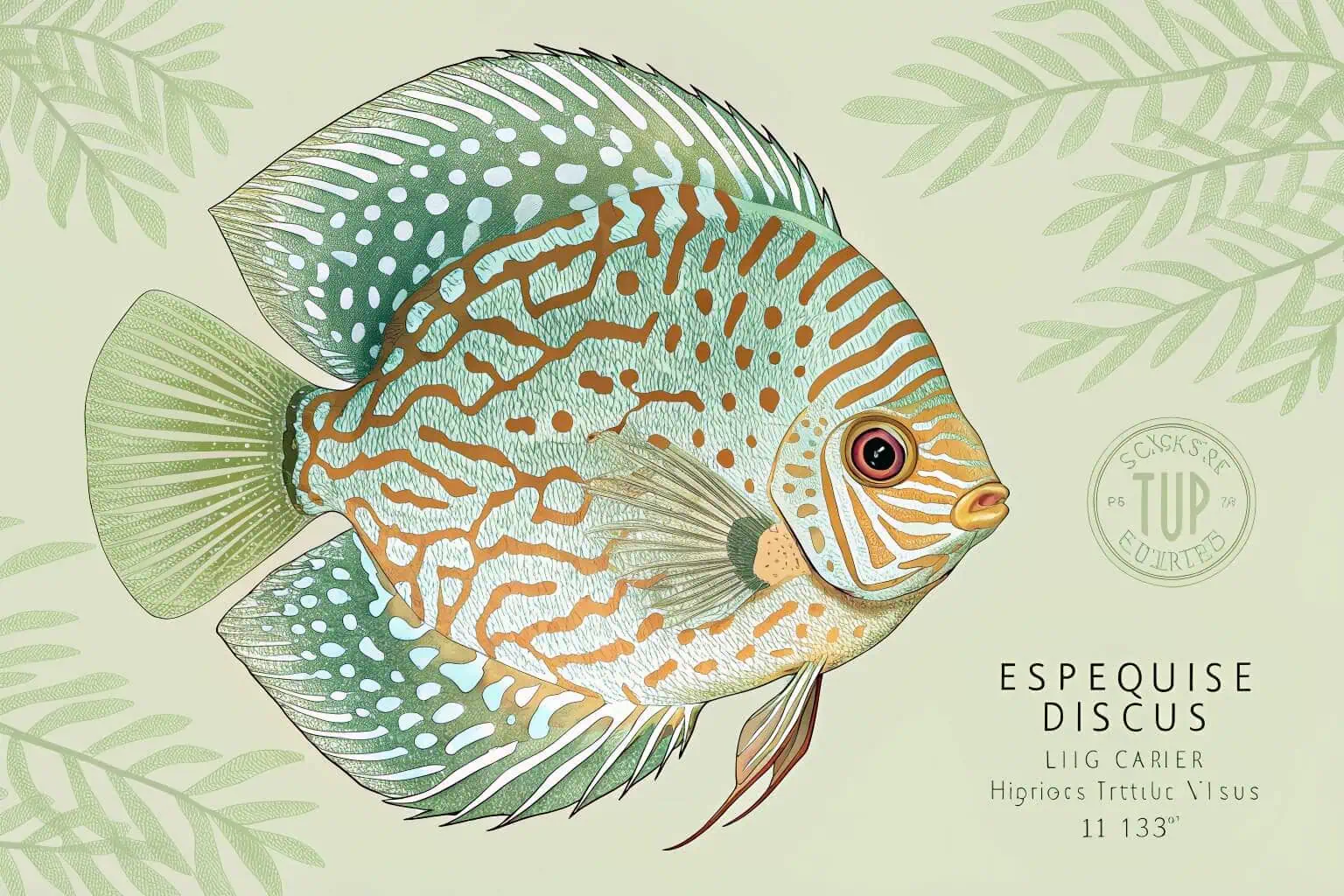Do people become millionaires by selling aquarium fish?
Is it truly possible to transform your passion for fish into significant wealth? The prospect is tempting, but the way to riches isn't always straightforward. Let's delve deeper.
Yes, it's possible to become a millionaire selling aquarium fish, but it's exceptionally rare. Achieving this requires a large-scale, commercial breeding operation, mastery of logistics, and a strong brand in high-demand, premium markets. For most, it's a profitable business, not a guaranteed path to millions.

As someone who has spent years in the ornamental fish industry, I've seen it all. I've seen hobbyists make a nice side income, and I've seen dedicated breeders build impressive businesses. The question of wealth comes up a lot, and the answer isn't a simple yes or no. It's a world where passion meets commerce, and success depends on much more than just loving fish. Let's break down what it really takes to succeed and what kind of profits you can realistically expect from this fascinating niche.
Is selling aquarium fish profitable?
Thinking about turning your fish tank into a cash machine? It's a great idea, but rising costs for electricity and feed can quickly eat into your earnings. Here’s the secret.
Selling aquarium fish is definitely profitable if you approach it strategically. Success hinges on choosing high-demand species, controlling your operational costs, and effectively reaching your target market. Focusing on high-value fish while keeping overhead low is the most reliable formula for generating a consistent income.

From my own experience, profitability1 is a game of balance. I learned early on that you can't just breed what you like; you have to breed what sells. This means doing your homework. I spent countless hours researching trends, talking to other breeders, and visiting local fish stores to see what customers were asking for. This led me to focus on a few specific species where I could build a reputation for quality. It wasn't just about the fish, either. I had to become an expert in efficiency, finding ways to lower my electricity bill and source high-quality food in bulk. It's a business, and every penny you save on costs is a penny added to your profit. The journey from a simple hobby to a profitable venture is about making smart, informed decisions every step of the way.
Understanding Your Core Costs
The biggest mistake I see new breeders make is underestimating their expenses. Your initial setup2 is just the beginning. The real costs are ongoing. Electricity for heaters, filters, and lighting is a major factor, especially if you have multiple tanks. Then there's food, water conditioners, and potential medication. To give you a clearer picture, I've broken down the typical operational costs3 versus the potential revenue for a small-scale breeder.
| Expense Category | Estimated Monthly Cost (Small Scale) | Notes |
|---|---|---|
| Electricity | $50 - $150 | Varies greatly with climate and tank count |
| Fish Food | $30 - $100 | Depends on quality and type of fish |
| Water & Conditioners | $20 - $50 | Includes water changes and treatments |
| Miscellaneous Supplies4 | $20 - $40 | Nets, buckets, testing kits, etc. |
| Total Costs | $120 - $340 | This is your baseline operating expense. |
Maximizing Your Revenue Streams
Once you have your costs under control, you can focus on making money. Don't just rely on one sales channel. I started by selling to a local fish store, but I quickly expanded to online forums and social media groups. Selling directly to other hobbyists often brings in higher prices because you cut out the middleman. Building a good reputation is key; once people know you have healthy, high-quality fish, they will seek you out. You can also sell related products, like starter cultures for live food or young plants from your tanks, to create additional streams of income5 from the same system.
How much do aquarium fish breeders make?
Curious about what you could actually earn? The income potential in fish breeding varies wildly, from pocket money to a full-time salary. Let's look at the real numbers.
An aquarium fish breeder's income ranges from a few hundred dollars a month for a part-time hobbyist to several thousand for a dedicated, small-scale business. Full-time commercial operations can generate six-figure revenues, but profit depends heavily on the species, scale, and business efficiency.

I remember my first big sale. It was a batch of angelfish I had raised from fry, and I made about $100. It felt like a huge accomplishment! That initial success motivated me to get more serious. Over time, I scaled up, added more tanks, and focused on a more valuable species of pleco. My income grew steadily from a hobby level to something that could genuinely supplement my main job. I know breeders who have gone all-in, quitting their jobs to manage their fish business6 full-time. They are the ones who treat it like a true enterprise, managing inventory, marketing, and customer relationships with extreme professionalism. Their success shows that with dedication and a smart approach, you can build a substantial income in this field.
The Income Spectrum for Breeders
Your earnings are directly tied to your level of commitment and the scale of your operation. It's not just about having more tanks; it's about running a more efficient and targeted business7 at each level. A hobbyist might sell common guppies to a local store, while a boutique breeder focuses on selling rare cichlids to collectors online for a much higher price. The commercial breeder plays a different game entirely, dealing in high volumes for wholesale distribution.
| Breeder Type | Typical Monthly Income | Primary Market | Key to Success |
|---|---|---|---|
| Hobbyist Breeder8 | $50 - $300 | Local Fish Stores, Clubs | Low overhead, consistent production |
| Boutique/Specialist9 | $500 - $3,000+ | Online Collectors, Forums | Reputation, rare species, high quality |
| Commercial Operation10 | $5,000 - $15,000+ | Wholesalers, Retail Chains | Scale, efficiency, logistics |
Factors That Influence Your Earnings
Beyond scale, several other factors determine how much you can make. Your reputation is paramount; a breeder known for healthy, vibrant fish can command higher prices. The species you choose is also critical. Breeding common livebearers will never be as lucrative as breeding sought-after discus or arowana11. Finally, your business skills matter. Your ability to market your fish, manage your finances, and provide good customer service will ultimately separate you from the hobbyists and put you on the path to becoming a profitable business.
Is selling fish a profitable business?
Thinking of moving beyond a hobby and starting a real fish business? It's a big step that requires more than just breeding skills. Let's explore what it takes to succeed.
Yes, selling fish is a profitable business, but it demands a solid plan and business acumen. Success isn't just about breeding; it's about market research, branding, operational efficiency, and customer service. Treating it as a serious enterprise from day one is essential for long-term profitability.

When I decided to get serious, the first thing I did was write a business plan. It felt a bit formal for a fish business, but it was the best decision I ever made. It forced me to think critically about my target market12, my startup costs, and how I would price my fish. I realized that being a good breeder wasn't enough. I had to be a good business owner. This meant setting up a simple accounting system, creating a basic website, and learning about shipping logistics. It transformed my thinking from 'I'm selling some extra fish' to 'I'm building a brand.' That mental shift is the key to turning a passion project into a truly profitable business that can stand the test of time.
Building Your Business Foundation
A successful fish business is built on more than just water and glass. It requires a strategic foundation. Your first step is to define your niche. Will you sell high-volume, low-cost fish or low-volume, high-value exotics? This decision will shape your entire business, from the tanks you buy to the customers you target. Next, you need to map out your startup costs13. Don't just guess; create a detailed budget. This exercise will show you exactly how much capital you need to get started and will help you set realistic sales goals.
| Startup Item | Estimated Cost (Small to Medium) | Purpose |
|---|---|---|
| Tanks (10-20) | $500 - $2,000 | The core of your breeding operation |
| Filtration & Heating | $400 - $1,500 | Essential for fish health and water quality |
| Initial Breeding Stock14 | $300 - $1,000+ | Choose high-quality, healthy fish |
| Supplies & Equipment | $200 - $500 | Nets, food, conditioners, shipping materials |
| Total Startup | $1,400 - $5,000+ | Your initial investment to launch. |
Marketing and Brand Identity
In a crowded market, you need to stand out. Your brand is your promise to your customers. It's your reputation for quality, health, and reliability. Start by creating a professional logo15 and a simple website or social media page to showcase your fish. Take high-quality photos and videos. Share your knowledge and passion. When customers buy from you, they're not just buying a fish; they're buying your expertise and the assurance that they're getting a healthy animal. Excellent customer service will turn one-time buyers into repeat customers and your biggest advocates.
What is the most profitable fish to sell?
Want to focus on the species that bring the highest returns? The answer isn't always the most exotic fish, but it does involve strategy. Let's find the money-makers.
The most profitable fish to sell are typically high-demand, high-value species like Asian Arowana, Discus, and rare Plecos. Specialty freshwater shrimp and saltwater corals also command high prices. Profitability comes from a combination of high market value, strong collector demand, and manageable breeding difficulty.

I've bred dozens of species over the years, and I can tell you that profit is directly linked to supply and demand. I once tried breeding common guppies. I had hundreds of them, but the price per fish was so low that it barely covered the cost of food. Then, I switched to a specific type of fancy pleco. They were harder to breed and grew slower, but each one sold for 50 times the price of a guppy. That's when I learned the lesson: it's better to sell 10 fish for $50 each than 500 fish for $1 each. The most profitable fish16 are the ones that other people find difficult to breed, have a dedicated collector base, and are always in demand.
Top Tier Profitable Species
Certain fish consistently top the charts for profitability. These are the species that collectors and serious hobbyists are willing to pay a premium for. They often require more skill and patience to breed, but the payoff is significantly higher. For example, a single high-quality Asian Arowana17 can sell for thousands of dollars, making it one of the ultimate high-risk, high-reward species in the hobby. Discus are another favorite, with their stunning colors and patterns driving a passionate market.
Balancing Profit with Difficulty
The most expensive fish aren't always the most profitable for a new breeder. You have to balance the potential selling price with the difficulty and cost of breeding. Arowana, for instance, require enormous tanks and are very slow to mature. A better strategy for many is to find a middle ground. Species like German Blue Rams or certain Apistogramma18 are always in demand, command a decent price, and can be bred in smaller setups. The key is to find a fish that fits your skill level, space, and budget.
| Fish Category | Price Range (Per Fish) | Breeding Difficulty | Target Market |
|---|---|---|---|
| High-End Exotics19 | $100 - $10,000+ | High | Serious Collectors |
| Niche Specialists20 | $20 - $150 | Medium | Dedicated Hobbyists |
| Prolific Breeders21 | $2 - $10 | Low | Beginners, Local Shops |
Conclusion
Selling aquarium fish can be a very rewarding and profitable business for those with passion and a plan. It's not a shortcut to becoming a millionaire, but it offers a real opportunity.
-
Understanding the factors that influence profitability can help you make informed decisions to enhance your business success. ↩
-
Learn about the essential components of the initial setup to avoid common pitfalls and ensure a successful start. ↩
-
Understanding operational costs is crucial for budgeting and ensuring profitability in fish breeding. ↩
-
Exploring the necessary supplies will ensure you have everything required for a healthy aquarium environment. ↩
-
Discover various strategies to diversify your income and enhance your business's financial stability. ↩
-
This resource provides insights into managing a fish business, from marketing to customer relations, essential for success. ↩
-
Explore this link to discover strategies that can enhance your business efficiency and targeting, leading to increased earnings. ↩
-
Explore the advantages of being a Hobbyist Breeder, including low overhead and community engagement. ↩
-
Learn how to build a reputation and offer rare species as a Boutique/Specialist breeder for higher income. ↩
-
Discover essential strategies for scaling and optimizing logistics in a Commercial Operation for maximum profit. ↩
-
Learn why focusing on high-demand species like discus or arowana can significantly increase your earnings in fish breeding. ↩
-
Understanding your target market is crucial for business success; this link will provide valuable insights on how to define and reach them. ↩
-
Calculating startup costs accurately is essential for financial planning. This link will guide you through the process effectively. ↩
-
Understanding how to select high-quality breeding stock is crucial for a successful fish farming operation. Explore expert insights to enhance your knowledge. ↩
-
Explore this resource to learn how to design a logo that effectively represents your brand and attracts customers. ↩
-
Identifying profitable fish can significantly boost your breeding business. Check out this resource for insights on top choices. ↩
-
Explore the market dynamics and pricing of Asian Arowana to understand its high value in the fish hobbyist community. ↩
-
Exploring Apistogramma breeding techniques can guide you in selecting a viable fish for your breeding business. ↩
-
Explore expert tips on maintaining High-End Exotics to ensure their health and longevity in your aquarium. ↩
-
Discover popular Niche Specialists that can enhance your aquarium and satisfy your passion for unique species. ↩
-
Learn about the best Prolific Breeders that are perfect for beginners, making fishkeeping enjoyable and successful. ↩